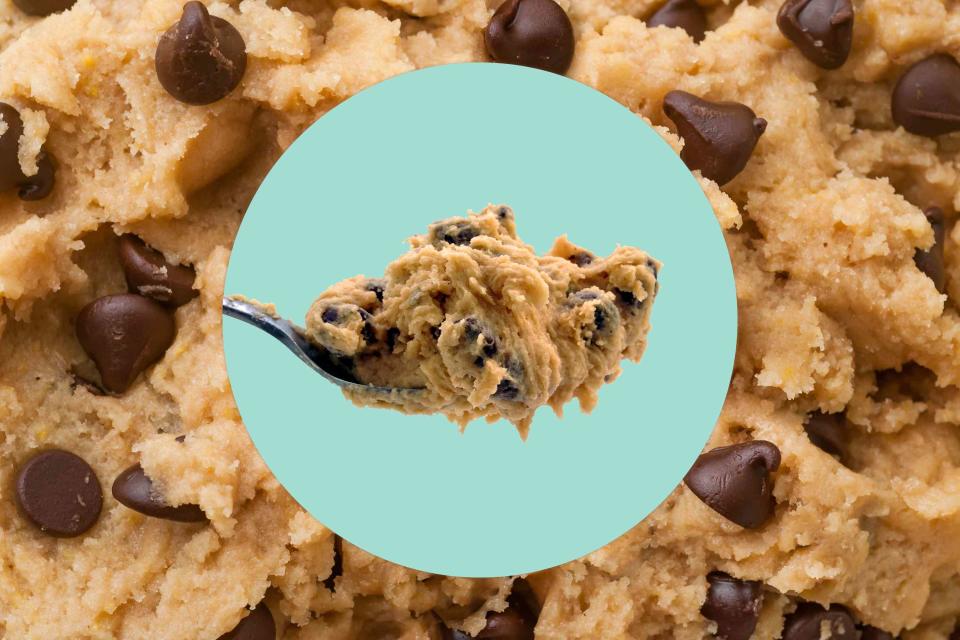7 Food Myths You Shouldn’t Believe
Not all kitchen wisdom is true.

Like many avid home chefs, I draw my cooking knowledge from a myriad of sources. My mom’s many lessons in the kitchen when I was a child (and our phone calls today), videos and recipes on the internet, cookbooks, and advice from colleagues all influence how I cook. While drawing on all these sources helps inspire different ideas and has helped refine my point of view on food, it occasionally allows for some misinformation to slip through the cracks. We’ve all bought into a food myth, whether it’s a piece of advice from an influencer on TikTok or something your grandmother taught you (and that her grandmother taught her) that you’ve never second-guessed. Here are just a few of the most common misconceptions about food that I’ve encountered, and why you shouldn’t believe them.
Searing meat does not lock in juices
You might have heard this myth while learning how to cook a steak, but unfortunately it isn’t true. The reality is that when you cook meat, it loses moisture — even when it is seared. But that doesn’t mean searing a steak isn’t worth it, as the process will produce a more flavorful, browned crust on your meat. As long as you don’t overcook the steak, it won’t get dry; use a meat thermometer or follow these chef tips for determining doneness.
Related: Reverse-Sear Steak
You can use soap to clean a cast-iron skillet
As a former customer service agent for a cast-iron skillet company, and an aficionado of this timeless cookware, this is a myth I’m particularly passionate about debunking. The misconception lies in the belief that soap will remove the seasoning on a cast-iron skillet, or the layer of polymerized oil that makes these pans naturally nonstick. But while soap will remove oil that isn’t bonded to the surface of cast-iron, a gentle wash with some suds won’t remove the seasoning that’s well-adhered to the skillet.
Related: The 6 Best Cast Iron Skillets to Last a Lifetime, According to Our Tests
Adding olive oil to pasta water does not prevent noodles from sticking together
Oil and water do not mix. When cooking pasta, this means that when you put oil in your pasta cooking water, it’s not going to evenly disperse throughout the water and coat your pasta. To prevent your noodles from sticking, simply stir the dried pasta frequently after adding it to the pot, until the water returns to the boil. Overdone pasta is also much more likely to stick, so make sure you aim for al dente! And if the cooked pasta is going to sit in a colander or bowl for a bit while you make a sauce, you could toss a little oil or butter in with it to prevent possible sticking.
Eating cookie dough is dangerous even if there aren’t raw eggs in it
You may have been told to not eat raw cookie dough because of the raw eggs. And although this is true, it implies that eating cookie dough without eggs is okay. Eating raw, unpasteurized eggs does put you at risk of contracting salmonella, but egg-free cookie dough is still not safe to eat. Few people seem to realize that eating raw flour is also a common cause of food poisoning — it's listed as one of the CDC’s most common sources of foodborne illness.
Cheddar cheese is not naturally orange
When you choose between white and orange cheddar at the grocery store, you’re really just choosing between a cheese that’s been dyed and one that has not. That signature color we associate so closely with cheddar is actually artificial. Centuries ago in England, cows produced orange-tinted milk thanks to a beta carotene-rich diet. The color of the original cheddar led farmers to later dye their cheese with annatto seeds, a practice that’s continued for generations. Most cheddars today still achieve their golden hue thanks to annatto, but some are dyed with paprika or artificial coloring agents. If you really care about the flavor of your cheddar, the biggest variable to pay attention to is how long it’s been aged.
Related: This Quaint English Village Has the World's Original Cheddar Cheese Caves
The red juice from your medium-rare steak is not blood
People who say that they like their steak extra bloody may think the red juices are blood, but that’s not correct. The juice is actually a mix of water and myoglobin, the protein responsible for transporting oxygen to muscle tissues. Myoglobin changes colors when it is exposed to oxygen and at different levels of doneness, so it’s the reason that your rare or medium-rare steaks are much more pink than one that’s cooked until well done.
Decaf coffee is not caffeine free
While decaf coffee is certainly very low in caffeine, it does contain a very small amount — so if you are sensitive to caffeine, consider yourself warned. In order to create decaf coffee, the caffeine has to be removed from the beans, but it’s nearly impossible to remove all of the caffeine present. According to the National Coffee Association, a cup of decaf coffee typically contains about 2 milligrams of caffeine, compared with regular coffee, which has about 95 milligrams per cup.
For more Food & Wine news, make sure to sign up for our newsletter!
Read the original article on Food & Wine.

